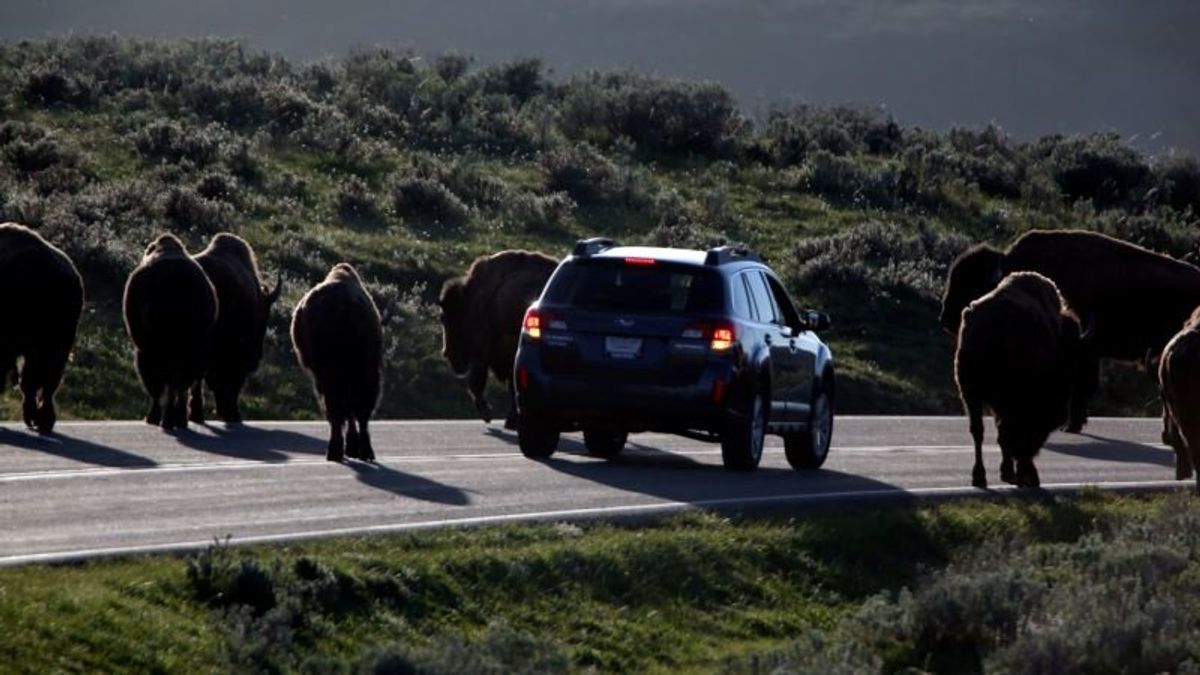
US Agency Endorses Plan to Block New Mining Near Yellowstone
US Agency Endorses Plan to Block New Mining Near Yellowstone

BILLINGS, MONTANA —
U.S. officials recommended approval on Friday of a plan to block new mining claims for 20 years on the forested public lands that make up Yellowstone National Park’s mountainous northern boundary.
Regional Forester Leanne Marten submitted a letter to the Bureau of Land Management endorsing the plan to withdraw 30,000 acres (12,140 hectares) in Montana’s Paradise Valley and the Gardiner Basin from new claims for gold, silver, platinum and other minerals, U.S. Forest Service spokeswoman Marna Daley said.
A final decision is up to the office of U.S. Interior Sec. Ryan Zinke, who favors the withdrawal. Zinke said in a statement that it could be finalized in coming weeks.
The Trump administration’s support is notable given the president’s outspoken advocacy for the mining industry and his criticism of government regulations said to stifle economic development. The proposal has received bipartisan backing in Montana, with Democrats and Republicans alike eager to cast themselves as protectors of the natural beauty of the Yellowstone region.
The rocky peaks and forested stream valleys covered by the withdrawal attract skiers, hikers and other recreational users. It’s an area where grizzly bears, wolves and other wildlife roam back and forth across the Yellowstone border — and where the scars of historical mining still are visible on some hillsides.
The Forest Service recommendation follows concerns among business owners, residents and local officials that two proposed mining projects north of Yellowstone could damage waterways and hurt tourism, a mainstay of the local economy.
Those two projects would not be directly affected because the companies behind them have already made their mining claims, the companies have said. But others have said the new move could discourage investment into those project.

About 1.7 million people drove through the area last year, and withdrawing the land from new mining development would help protect the areas for wildlife and recreation, according to U.S. Forest Service officials.
The withdrawal includes only public lands, not existing mining claims or exploration on private lands. It’s been in the works since 2016 under Zinke’s predecessor, former Interior Sec. Sally Jewell.
“I’ve always said there are places where it is appropriate to mine and places where it isn’t. The Paradise Valley is one of those unique places,” Zinke said.
Montana Republican U.S. Sen. Steve Daines said the areas covered by the withdrawal were “truly special places that deserve protection.”
U.S. Sen. Jon Tester, a Montana Democrat, called on Daines to support legislation sponsored by Tester that would make the withdrawal permanent. Tester’s bill was introduced last year and is currently before the Senate Energy and Natural Resources Committee, of which Daines is a member.
An identical bill sponsored by Republican U.S. Rep. Greg Gianforte is pending in the House.
The mining industry opposes putting the public land off limits. Backers of the withdrawal want it made permanent.
Under the proposal, government officials have estimated that 81 acres (33 hectares) would still be disturbed by mining and 4.5 miles (7 kilometers) of new roads would be built, according to a Forest Service analysis completed in March. That compares to an estimated 130 acres (53 hectares) of land disturbed by mining and 7 miles (11 kilometers) of roads over 20 years if the withdrawal were not enacted.
 Senate Panel Sets Deadline for Kavanaugh’s Accuser to RespondNext PostSenator Gives Kavanaugh Accuser More Time to Decide About Testimony
Senate Panel Sets Deadline for Kavanaugh’s Accuser to RespondNext PostSenator Gives Kavanaugh Accuser More Time to Decide About Testimony 






